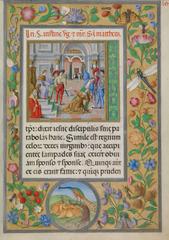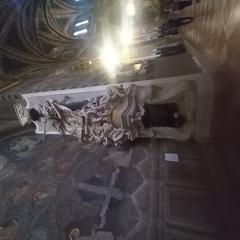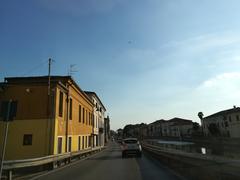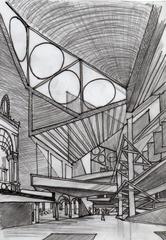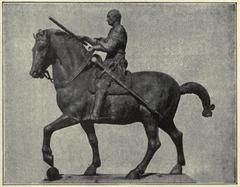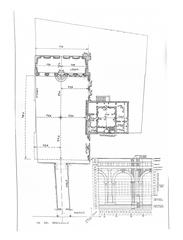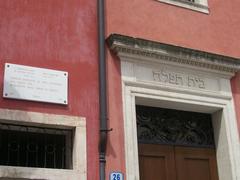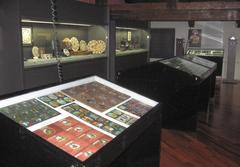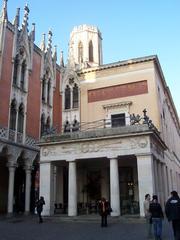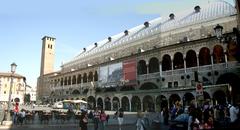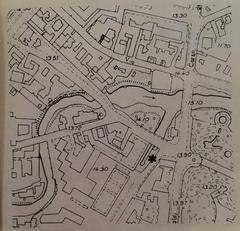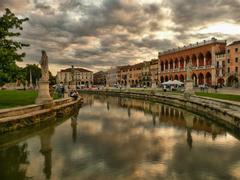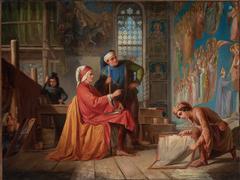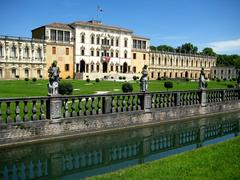Museo di Scienze Archeologiche e d’Arte Padua: Visiting Hours, Tickets, and Visitor Information
Date: 14/06/2025
Introduction
Nestled in the historic center of Padua, Italy, the Museo di Scienze Archeologiche e d’Arte is a renowned institution dedicated to the Mediterranean’s ancient civilizations and the artistic legacy of the region. Housed in the architecturally significant Palazzo Liviano—designed by Gio Ponti—the museum is intimately connected to the University of Padua, one of Europe’s oldest universities, with a tradition of antiquities collection dating back to its founding in 1222. Since its establishment as a museum in the late 1930s, it has evolved into a modern, accessible, and educational hub for scholars, students, and visitors alike. Here, you’ll find essential information for planning your visit, including history, collections, accessibility, ticketing, and nearby attractions.
For detailed, up-to-date visiting hours, tickets, and events, refer to the museum’s official resources. (archeologia.musei.unipd.it, Musei UNIPD, mostre.cab.unipd.it)
Table of Contents
- Introduction
- Historical Development
- Architectural Context: Palazzo Liviano and Gio Ponti
- Collections and Curatorial Highlights
- Visitor Engagement and Educational Programs
- Visiting Hours, Tickets, and Practical Information
- Accessibility Features
- Transportation and Nearby Attractions
- Digital Engagement and Online Resources
- Frequently Asked Questions (FAQ)
- Conclusion
- References
Historical Development
Origins and Early Growth
The museum’s roots are firmly embedded in the University of Padua’s centuries-old tradition of collecting and studying antiquities. Over time, significant collections, such as the Mantova Benavides assemblage, were formed through donations, acquisitions, and university research. Early collections were dispersed among academic departments until the late 1930s, when they were consolidated into a single institution (archeologiafuoriluogo).
Institutionalization and Modernization
Under the guidance of rector Carlo Anti, the museum found its permanent home on the third floor of Palazzo Liviano between 1937 and 1939. The move marked a new phase, offering expanded exhibition spaces and a focus on public education and research. In subsequent decades, the museum underwent significant modernization, including renovations to improve accessibility and the introduction of digital interpretation tools (archeologia.musei.unipd.it).
Recent Developments
Recent refurbishments have enhanced both the visitor experience and inclusivity. The museum now features tactile tours, digital audioguides, and a variety of interactive resources. Its ongoing evolution reflects a commitment to accessibility, scholarly research, and engagement with the local and international community.
Architectural Context: Palazzo Liviano and Gio Ponti
Palazzo Liviano, designed by Gio Ponti—a master of modern Italian architecture—serves as a landmark of rationalist design. Completed in 1939, it houses not only the museum but also the university’s Faculty of Letters and Philosophy. Ponti’s vision emphasized light, openness, and functional beauty, creating an environment that supports both academic work and public appreciation of the museum’s treasures (anatomiaumana.musei.unipd.it).
The building’s central location in Piazza Capitaniato ensures easy access to other major city landmarks, while the museum’s interior layout—divided into distinct but interconnected sections—offers visitors a coherent narrative through the history of the Veneto and the broader Mediterranean.
Collections and Curatorial Highlights
Mantova Benavides Collection
A centerpiece of the museum, the Mantova Benavides Collection exemplifies Renaissance antiquarianism, featuring ancient and Renaissance sculptures, workshop models, and ceramics illustrating a dialogue between antiquity and the Renaissance (Musei UNIPD).
Didactic Archaeological Collections
This extensive group spans Egyptian, Greek, Italic, and Roman artifacts, including the Merlin-Hieke collection of ceramics, Roman bronzes, glassware, and artifacts from ancient Patavium (Roman Padua), some displayed with interactive panels and digital resources (Museo Archeologia).
Gipsoteca
A dedicated gallery of plaster casts offers insight into Greek and Roman masterpieces and their influence on education and art history (Musei UNIPD).
Lithological Collection
This section explores ancient building materials and their connection to archaeological research (Musei UNIPD).
Visitor Engagement and Educational Programs
The museum is committed to educational outreach. Highlights include:
- Thematic Room Arrangement: Chronological galleries covering prehistory to the Roman era.
- Interactive Technology: Multimedia stations, QR-coded audioguides, and digital reconstructions.
- Workshops and School Programs: Hands-on activities, simulated digs, and family-friendly materials.
- Guided Tours: Regular tours in Italian and English, led by archaeologists and art historians, with special thematic events and lectures.
- Visitor Services: Information desk, multilingual materials, cloakroom, rest areas, and a museum shop.
Visiting Hours, Tickets, and Practical Information
- Opening Hours: Tuesday to Sunday, 9:00 AM – 6:00 PM. Closed Mondays and select holidays. Check the official website for updates.
- Ticket Prices: General admission €5; discounts for students, seniors, and groups; free for university students and children under 18. Visitors with disabilities and their companions receive free or reduced admission.
- Guided Tours: Available in Italian and English. Book in advance online or inquire at the entrance.
- Location: Palazzo Liviano, Via VIII Febbraio, 2, Padua. Easily reachable by public transport; accessible parking available by reservation.
Accessibility Features
The museum is committed to inclusivity:
- Physical Accessibility: Wheelchair ramps, elevators, wide corridors, accessible restrooms.
- Sensory Accessibility: Tactile models, Braille labels, adjustable audio guides, soft lighting.
- Cognitive Accessibility: Clear signage, visual aids, and adaptable educational programs.
- Inclusive Programming: Sensory-friendly tours, “quiet hours,” and collaborations with local organizations.
Transportation and Nearby Attractions
The museum’s central location allows easy exploration of Padua’s cultural landscape. Nearby sites include:
- Scrovegni Chapel
- Basilica of Saint Anthony
- Botanical Garden of Padua
- Prato della Valle
- Piazza dei Signori
Plan your itinerary to combine museum visits with walks through historic streets and stops at local cafés.
Digital Engagement and Online Resources
- Virtual Tours: Explore the collection online (Museo Archeologia Virtual Tour).
- Audioguides: Free digital guides via QR code (Musei UNIPD).
- Educational Resources: Downloadable materials for schools and families.
- Social Media: Follow for updates on exhibitions and events.
Frequently Asked Questions (FAQ)
Q: What are the visiting hours?
A: Tuesday to Sunday, 9:00 AM – 6:00 PM; closed Mondays/holidays.
Q: How much do tickets cost?
A: €5 general, discounts for students, seniors, children; check official site for current rates.
Q: Is the museum accessible for wheelchair users?
A: Yes, with ramps, elevators, and accessible restrooms.
Q: Are guided tours available?
A: Yes, in Italian and English; book online or on-site.
Q: Can I take photos?
A: Photography is allowed in most areas without flash; check for exhibition-specific restrictions.
Q: Are there virtual tours?
A: Yes, available on the museum’s website.
Q: What COVID-19 measures are in place?
A: Enhanced cleaning, sanitizing stations, and compliance with local health guidelines.
Conclusion
The Museo di Scienze Archeologiche e d’Arte stands as a model of cultural preservation, education, and accessibility. Its diverse collections, engaging programs, and thoughtful design make it one of Padua’s premier historical sites. Whether you are a scholar, student, family, or traveler, the museum offers a rich exploration of ancient history and local artistry. For the most current information on hours, tickets, and events, consult the official museum website. Enhance your experience with free audioguides and virtual tours, and make the most of your visit to Padua’s vibrant cultural landscape.
